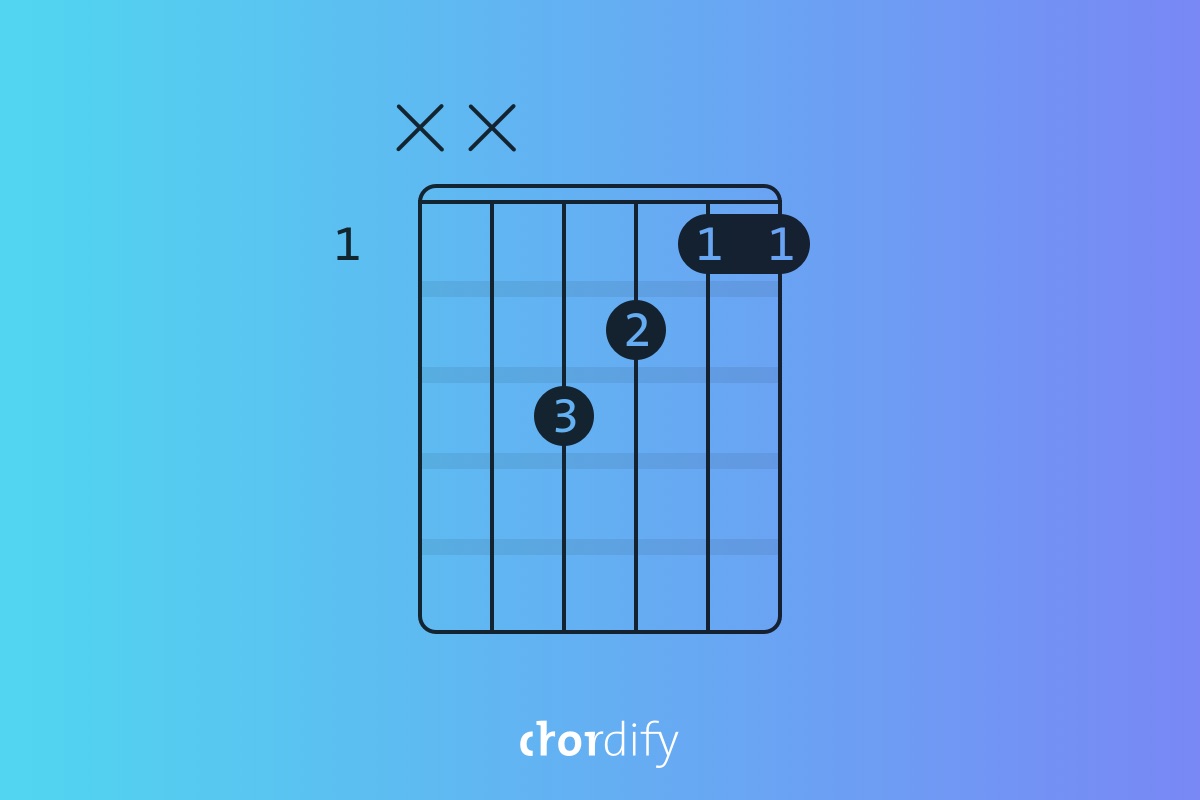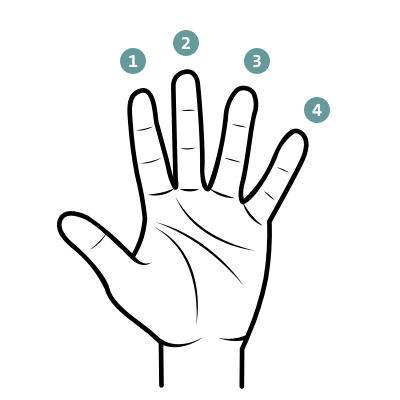We finally got to the last one of the basic chords. Are you ready to learn how to play an F chord? In this blog post we’ll serve you the three simple steps you need to know in order to play this chord. You’ll learn how to play the F chord in the blink of an eye!

In previous blogs we explained the secrets behind playing A chord, Am chord, E chord, Em chord, D chord , Dm chord, C chord and G chord. This article focuses on the last basic chord: the F chord. One thing before we start our journey, make sure your axe isn’t far because you’ll have to use it. Are your fingers getting sore during practice? Just read these tips about blister prevention and your fingers will be good as new.
Step 1 – Tune your guitar
So, what do pros and novices have in common when it comes to playing guitar? Stop guessing and just take a look at the title of this first step. Just read our blog post on tips & tricks for tuning your guitar, or use an analog tuner. No time for reading, and not having a tuner lying around? Try out our tuner application KARANG.
Step 2 – Check out the diagram of the F chord
The second step in your short journey towards learning the F chord is visualizing what you’re going to play. This is not a hard thing to do since we already have a chord diagram of the F chord. Check it out on the picture below. The vertical lines from left to right are the strings E, A, D, G, B, e (strings are counted from bottom to top, so the high e is the first string and the low E the sixth).

You can also see crosses at the top. These indicate the strings that you should not play for this chord. The number 1 (top left-hand side) indicates the fret on which the chord is located, this way you won’t get lost on the guitar neck. As you can see the F chord is located at the top of the fretboard.
Step 3 – Position your fingers
The numbers in the thick black circles show the position of your fingers. We made a picture to help you visualize: 1 indicates your index finger, 2 your middle finger, and 3 your ring finger. So what you do think? Is it time for the F chord? Yup, let’s get started. Look at the chord diagram again and start positioning your fingers as pointed out.
Begin with your index finger on the first and second string (the e and B string) first fret. Your middle finger goes to the second fret of the third string (the G string). After you’ve placed your ring finger on the third fret fourth string (the D string) you are able to play the F chord. Press all the strings underneath your fingers firmly, give them a good ring without strumming the lower E and A string. Enjoy the sound of this newly learned chord.

Step 4 (bonus) – Do you want to know why an F chord is played as it is?
Congratulations are in place since you just learned how to play the F chord. What are we going to do now? You can stop reading and start jamming to the F right away. Or you can read on and check out some nerdy stuff about the chord you just learned. There is no good or bad choice, so do as you please.
No way, you’re still here! Buckle up, because this next bit of music theory can get a bit bumpy. The information is simple but dense. Don’t worry if you don’t get it right from the get go. There are pros that don’t even know this stuff by heart. First off, each basic chord consists of a number of basic elements: the root, the third note (third), the fifth note (fifth) and the eighth note (octave).
The octave and the root have the same symbol, only they have a different pitch. The fifth is said to provide the power in the triad by supporting it harmonically. The third indicates whether a chord is major or minor. This says something about a chord’s mood — major often sounds cheerful and minor sounds sad or melancholic.
Step 5 (bonus) – The scale of F
Where do the numbers, first, fifth, and eight come from? Well, that’s because these tones come from the scale of the corresponding key. For example, the scale of the F is made up of F (1), G (2), A (3), Bb (4), C (5), D (6), E (7) and F (8). Note the numbers behind the notes. The 1 is the root, the 3 is the third, the 5 is your fifth and the 8 is the root played higher, which we also call — as already explained — the octave.
So check out the F chord diagram again. Which notes do you actually use from the scale? You strum F, A, C and F — so root, third, fifth, and octave. Makes sense, right? We also wrote a blog about more complex chord constructions. We can imagine that your eyes are burning from all the information you just read. So relax will you? Take a break and play some songs in F major Happy jamming!
Teo creates content, which means he writes, a lot, about music, and all things interesting. When it comes to jamming, his weapon of choice is the bass guitar.


